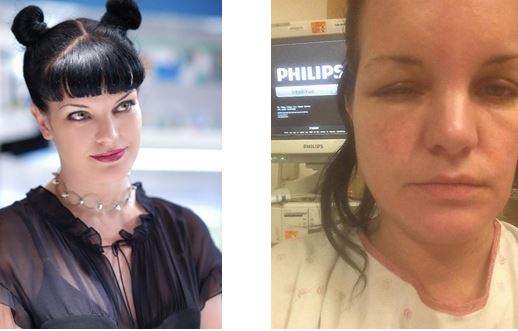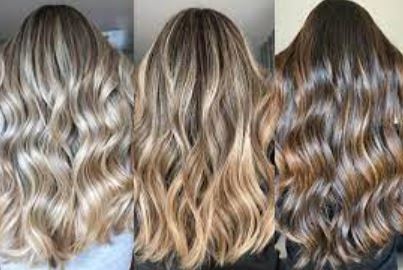Table of Contents
- 1 What Is PPD In Hair Color?
- 2 The Role of PPD in Hair Dye
- 3 How Does PPD Work?
- 4 Benefits of PPD in Hair Dye
- 5 Potential Risks and Concerns
- 6 Exploring Alternatives to PPD
- 7 FAQs About PPD In Hair Color
- 7.1 Is PPD safe for everyone to use?
- 7.2 Can PPD-free dyes deliver long-lasting color?
- 7.3 Are there any natural alternatives to PPD?
- 7.4 What should I do if I experience an allergic reaction to PPD?
- 7.5 Can I use PPD-based dyes if I’m pregnant?
- 7.6 Are there professional salons that offer PPD-free hair coloring services?
- 8 Conclusion
Hair color has the remarkable ability to transform our appearance, boost our confidence, and reflect our unique style. However, have you ever wondered about the ingredients that make up your favorite hair color?
One such ingredient that often raises questions is PPD, short for Paraphenylenediamine.
In this detailed guide, we will delve into the world of hair color chemistry, exploring what PPD is, its role in hair dye, potential benefits, risks, and alternative options.

What Is PPD In Hair Color?
PPD, also known as Paraphenylenediamine, is a chemical compound commonly used in hair dyes to create darker shades and longer-lasting color results.
It is an aromatic amine that belongs to the family of para-dyes. PPD is renowned for its oxidative properties, which enable it to bind with hair proteins and deliver rich, vibrant color that resists fading.
The Role of PPD in Hair Dye
Hair color products that incorporate PPD utilize their unique chemical structure to penetrate the hair shaft and interact with the natural pigments present.
The oxidative process initiated by PPD leads to a molecular transformation of the hair’s color, resulting in a wide spectrum of shades, from deep browns to blacks.
This ingredient plays a pivotal role in achieving consistent and durable hair color results.
How Does PPD Work?
PPD functions by undergoing an oxidation reaction when it comes into contact with air. This reaction generates pigments that attach to the hair’s cuticle and cortex layers.
As a result, the hair strand undergoes a color change that can last through multiple washes and exposure to external elements.
This oxidative reaction is crucial for the longevity of the hair color, making it a preferred choice for individuals seeking enduring results.
Benefits of PPD in Hair Dye
- Longevity: PPD-infused hair dyes are renowned for their lasting color impact, allowing you to enjoy vibrant hues for an extended period.
- Color Range: The versatile nature of PPD enables the creation of a broad spectrum of shades, catering to various preferences and styles.
- Consistency: PPD contributes to uniform and even color distribution, ensuring a professional-quality finish.
- Fade Resistance: Thanks to its oxidative properties, PPD-based hair dyes resist fading, maintaining their brilliance over time.
Potential Risks and Concerns
While PPD offers numerous benefits, it’s important to address potential risks and concerns associated with its use:
- Allergic Reactions: PPD has been linked to allergic reactions, ranging from mild irritation to severe dermatitis. Conduct a patch test before application.
- Sensitivity: Individuals with sensitive skin or a history of allergies should exercise caution when using PPD-containing products.
- Health Precautions: PPD exposure should be minimized, especially for pregnant or breastfeeding individuals. Consult a medical professional if in doubt.
- Ammonia Content: Some PPD-based dyes may contain ammonia, which can contribute to hair damage and dryness. Opt for ammonia-free options if desired.
Exploring Alternatives to PPD
If you’re concerned about PPD or have experienced adverse reactions, several alternatives are available:
- PPD-Free Dyes: Many brands now offer PPD-free hair dyes, utilizing alternative color compounds that reduce the risk of allergic reactions.
- Henna: Natural henna is a plant-based option that provides auburn to reddish hues. It’s an excellent alternative for those seeking a less chemically-intensive option.
- Vegetable-Based Dyes: These dyes utilize ingredients like beetroot, indigo, and chamomile to create a variety of shades without the use of PPD.
FAQs About PPD In Hair Color
Is PPD safe for everyone to use?
PPD can cause allergic reactions in some individuals. It’s recommended to perform a patch test before using any hair color product containing PPD.
Can PPD-free dyes deliver long-lasting color?
Yes, PPD-free dyes can offer vibrant and long-lasting color results. Advances in hair color technology have led to the development of alternative compounds that provide similar benefits.
Are there any natural alternatives to PPD?
Yes, natural alternatives like henna and vegetable-based dyes offer a chemical-free approach to coloring hair while achieving beautiful results.
What should I do if I experience an allergic reaction to PPD?
If you experience an allergic reaction, discontinue use immediately, and seek medical attention if symptoms persist or worsen.
Can I use PPD-based dyes if I’m pregnant?
It’s advisable to consult with a healthcare professional before using PPD-based hair dyes during pregnancy or while breastfeeding.
Are there professional salons that offer PPD-free hair coloring services?
Yes, many salons now offer PPD-free hair coloring options to cater to individuals with sensitivities or preferences for natural ingredients.
Conclusion
Understanding what PPD is in hair color products empowers you to make informed choices about the products you use.
While PPD offers remarkable benefits in delivering vibrant and long-lasting color, it’s essential to consider potential risks and explore alternative options if needed.
Whether you opt for PPD-based dyes or choose natural alternatives, achieving the perfect hair color while prioritizing your well-being is within your reach.




